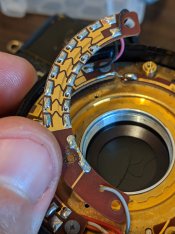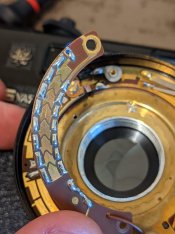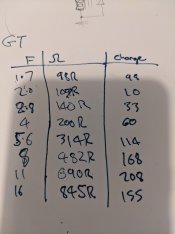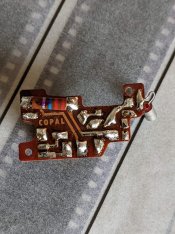I have an Electro 35 GSN that for the most part works fine. However, when I use f8 -> f16 it often chooses to use overly long shutter speeds. F8 setting being the worst. For example of what i'm experiencing - f5.6 normal shutter speed with no slow shutter speed indicator. F8 ~1/2s. F11 ~1/4s.
It's been almost 15yrs since I last took apart an Electro lens so I can't exactly remember what was in it but is this problem an issue with bad contacts or failed resistors (i think that what was inside the lens on each aperture setting)?
It's been almost 15yrs since I last took apart an Electro lens so I can't exactly remember what was in it but is this problem an issue with bad contacts or failed resistors (i think that what was inside the lens on each aperture setting)?












